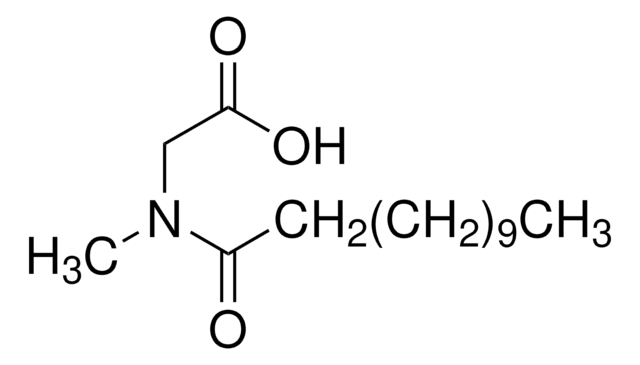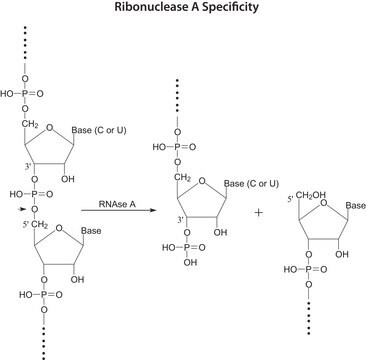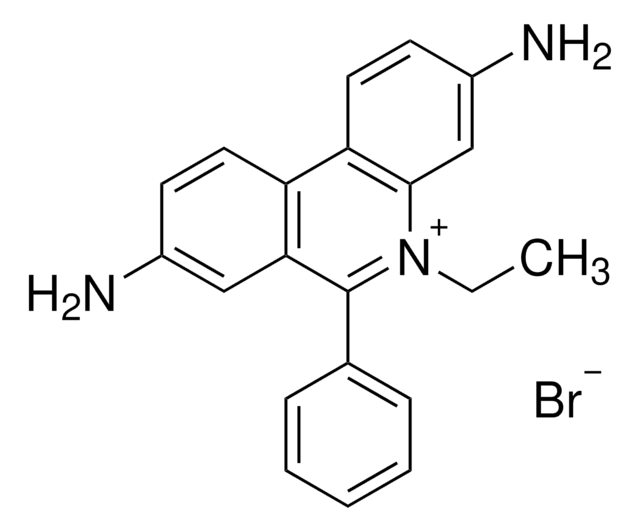61745
N-Lauroylsarcosine sodium salt
≥97.0% (HPLC)
Synonym(s):
N-Dodecanoyl-N-methylglycine sodium salt, Sarkosyl NL
About This Item
Recommended Products
description
anionic
Quality Level
Assay
≥97.0% (HPLC)
form
powder
mol wt
micellar avg mol wt 600
aggregation number
2
technique(s)
protein expression: suitable
protein purification: suitable
protein quantification: suitable
impurities
≤7% water
CMC
14.6 mM (20-25°C)
solubility
H2O: very soluble 293 g/L at 20 °C
SMILES string
[Na+].CCCCCCCCCCCC(=O)N(C)CC([O-])=O
InChI
1S/C15H29NO3.Na/c1-3-4-5-6-7-8-9-10-11-12-14(17)16(2)13-15(18)19;/h3-13H2,1-2H3,(H,18,19);/q;+1/p-1
InChI key
KSAVQLQVUXSOCR-UHFFFAOYSA-M
Looking for similar products? Visit Product Comparison Guide
General description
Application
Other Notes
Signal Word
Danger
Hazard Statements
Precautionary Statements
Hazard Classifications
Acute Tox. 2 Inhalation - Eye Dam. 1 - Skin Irrit. 2
Storage Class Code
6.1A - Combustible acute toxic Cat. 1 and 2 / very toxic hazardous materials
WGK
WGK 1
Flash Point(F)
512.6 °F - closed cup
Flash Point(C)
267 °C - closed cup
Personal Protective Equipment
Regulatory Listings
Regulatory Listings are mainly provided for chemical products. Only limited information can be provided here for non-chemical products. No entry means none of the components are listed. It is the user’s obligation to ensure the safe and legal use of the product.
JAN Code
61745-VAR:
61745-1KG:
61745-BULK:
61745-250G:
61745-50G:
Choose from one of the most recent versions:
Already Own This Product?
Find documentation for the products that you have recently purchased in the Document Library.
Customers Also Viewed
Our team of scientists has experience in all areas of research including Life Science, Material Science, Chemical Synthesis, Chromatography, Analytical and many others.
Contact Technical Service










